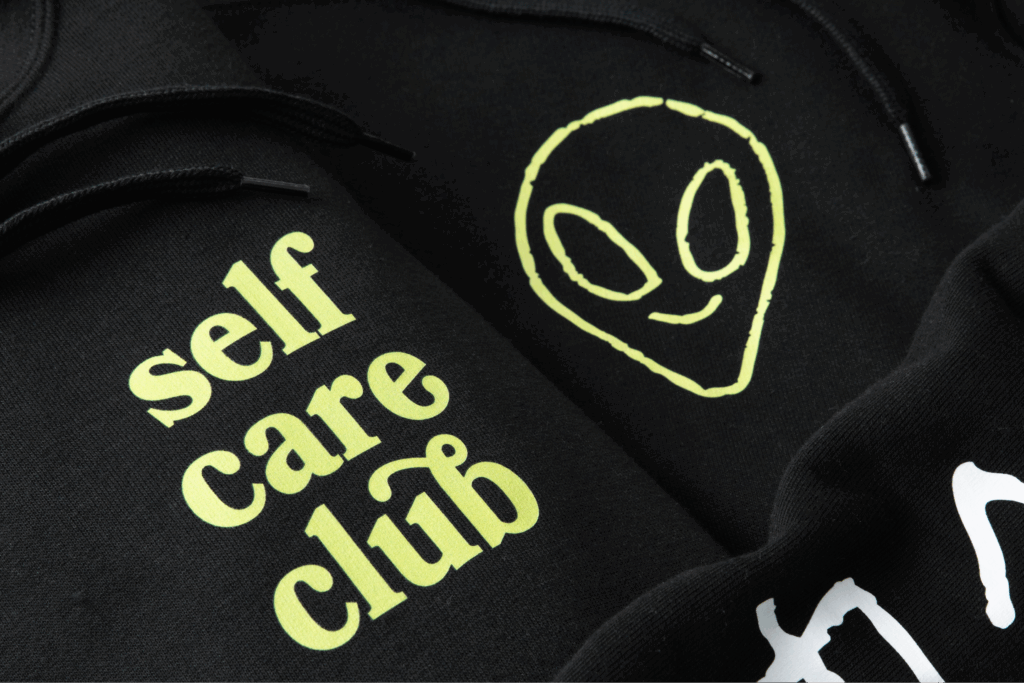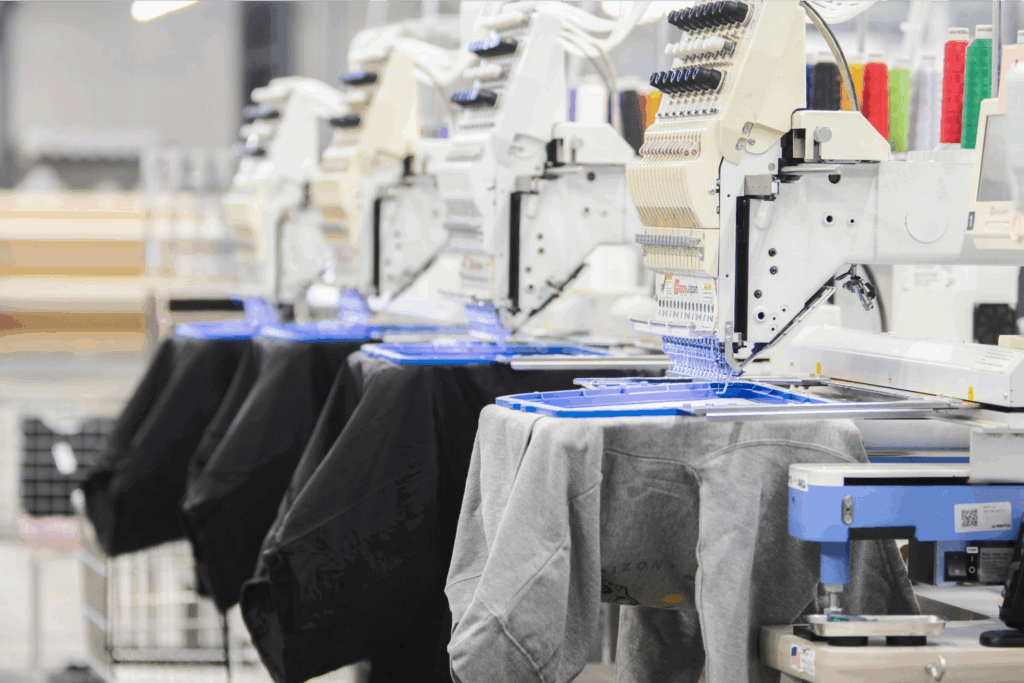Sell custom products with Printify
Running into a discontinued product can be frustrating – especially if it’s one of your bestsellers. But it’s a normal part of selling online with Print on Demand.
In this guide, we’ll walk you through what to do when items become discontinued or removed, how to keep your product pages updated, and how to adjust quickly so you can keep selling with Printify.
Why are products discontinued or removed?
Products can be discontinued for all kinds of reasons – and most of them are out of your control.
Here’s why it happens:
- The manufacturer stops producing it
If a manufacturer stops making a product altogether, it becomes permanently discontinued. That means no Print Provider can fulfill it anymore. - Quality or fulfillment issues
If a product gets consistently low ratings or too many support tickets, it may be discontinued to protect your store’s reputation and your customers’ experience. - Low demand or slow sales
Print Providers have to prioritize what sells. If a product isn’t moving, it may be removed to make room for high-performing stock or new products. - Provider-specific changes
Sometimes, only one Print Provider stops offering a product. The item might still exist in the Catalog, just from another provider. - Seasonal availability
Some discontinued items come back during specific times of the year. For example, a winter hoodie might disappear in spring, then return in fall.
While these reasons vary, the result is the same – the product is no longer available for fulfillment. If it’s permanently discontinued, it’s gone for good across all suppliers.
In many cases, you might be able to pick a product that’s identical or similar but is listed by another provider, or it’s just temporarily removed due to stock or seasonal limitations.
It’s worth checking the product page or your Printify dashboard for more context. This helps you decide whether to wait, replace, or remove the product entirely – and gives you a clear strategy for how to handle discontinued products without disrupting your store.
What to do when a product is removed

When an item is removed from your catalog, you don’t need to panic – but you should act fast to address the discontinued product. Outdated product pages can confuse customers, hurt your store’s credibility, and affect your visibility on search engines.
Here’s what to do when a product is removed.
1. Check your product list for affected listings
Log in to your Printify dashboard to identify which listings are impacted.
When a product or specific variant is set to be discontinued, Printify will notify you via email as soon as the information is available. This gives you time to review your listings, find replacements, or take action before customers are impacted.
To review your listing status manually, navigate to your My Products section in Printify and use the search and status filters to locate all discontinued items. You can filter by Print Provider, product type, or even search “discontinued” directly.
This makes it easier to bulk-select affected listings and either delete, duplicate, or replace them – especially if you’re managing hundreds or thousands of SKUs.
2. Unpublish or pause listings
Leaving discontinued product pages live when there’s nothing left to sell can mislead users and damage your store’s reputation. To avoid this, unpublish the affected listing or temporarily hide it from your site until you’ve decided whether to replace or remove it.
This step helps prevent abandoned checkouts, support issues, and frustrated customers buying from competitors – especially if the listing is still visible in search results or linked on other parts of your website.
If possible, configure a proper status code for each removed page (like a 410 Gone for permanent removals or a 301 Redirect to push traffic to a similar product page). Search engines will understand the change, protecting your organic traffic and page rankings.
3. Communicate with customers
If the discontinued item had any ongoing orders, was part of a pre-order campaign, or involved custom design requests, you need to communicate proactively. Buyers should never discover a product issue through a refund notification – that damages trust and invites negative reviews.
Send a personal message to affected customers as soon as you confirm the product has been discontinued. Be clear, professional, and empathetic in your tone. Let them know:
- Why the item is no longer available (e.g., supply issue, production change)
- What happens next (replacement, refund, store credit)
- How customers can purchase an alternative or stay updated on new products
Where possible, recommend a similar product or direct them to other items they might like.
4. Consider replacing the product

Before deleting the listing, check if a similar product already exists in Printify’s Catalog. In many cases, a comparable item is available from another Print Provider – possibly with even better prices or shipping options.
Use filters on the category page (e.g., custom apparel, drinkware, or home decor) to compare specifications such as material, color options, size range, and print area.
When you find a good match, apply your saved design using Printify’s Product Creator and launch your new listing in just a few clicks.
Use the moment as a chance to improve your offering. A newer model might have faster fulfillment times, more colors, or better profit margins – all things that add value to your catalog and help you sell more confidently.
5. Update or remove links
When you remove a product, the work isn’t over – chances are, it’s still linked across your website, blog posts, email campaigns, or wherever else you market to potential customers.
Each discontinued page is a potential dead end for buyers and a missed opportunity to redirect them toward active listings.
Go through your key channels and either delete outdated links or switch them to a similar product, a relevant category page, or your store’s homepage.
Keeping your site free of broken links is one of the simplest ways to maintain trust and protect your long-term sales performance.
6. Track your updates
Once you’ve removed or replaced a product, it’s important to close the loop internally. Create or update a centralized tracking document to note which listings were affected.
Note down what action you took (e.g., unpublished, redirected, rebuilt) and where you’ve updated or removed content across your site and marketing channels.
This helps you and your team avoid duplicated effort and keeps your operations clean.
Include fields like:
- Discontinued date
- Action taken (e.g., delete, redirect, replace)
- Replacement product URL (if applicable)
- Platform status (live/unpublished)
- Notes on customer communication or refunds
How to find replacement products?

If something’s been discontinued, the good news is that there’s almost always a swap. Printify makes it easy to find alternative products without slowing down your store or losing sales.
1. Use Printify’s Catalog filters
Head to Printify’s Catalog and explore the relevant category (like custom apparel or drinkware) and filter by material, price, color, print area, or provider. This is the fastest way to find a similar product that fits your niche and audience.
Don’t forget to check the Trending products page – there might be a better-selling stock item to replace your old one.
2. Explore other Print Providers or variants
A product might be gone from one provider but still available through another. If so, keep the same listing and simply change the Print Provider or create a new one using similar specs.
You can also check other product pages in the same category, such as shirts, hoodies, or home decor, and compare dimensions, materials, and delivery times.
3. Rebuild your design with Product Creator
Once you’ve found the right base, open the Product Creator to upload and adjust your artwork. If your design was saved in our design tool, rebuilding your listing only takes a few clicks.
This helps your store recover quickly and maintain value for returning customers.
4. Review for quality and fulfillment
Always check product pages for details like fulfillment time, price, and print area before publishing. Even a similar item can vary slightly – and you want it to meet your expectations.
5. Think strategically
Sometimes, a product getting discontinued is a good reason to upgrade. Look for a newer model or a trending product with higher perceived value. Use the opportunity to upsell or refine your selling strategy.
How to prevent future disruptions
If you’ve had a product unexpectedly discontinued, you’re not alone – but you don’t have to get caught off guard next time.
By building a proactive system, you can protect your store, retain your customers, and avoid sudden drops in sales when changes hit.
Here’s how to future-proof your product strategy:
Rethink your product lineup

Having one or two top-sellers is great – until one vanishes.
Relying too heavily on a single provider or a narrow niche increases risk. Instead, diversify your storefront.
Mix different stock types, materials, and providers so your business stays flexible. If one mug gets discontinued, a similar one should already be in your shop. This way, you avoid gaps that hurt search results, customer satisfaction, or conversions.
Also, stay alert to seasonality. A product might not be permanently discontinued – it may simply rotate out of stock based on the time of year.
Build in redundancy
If you’ve found a winning design, don’t stop at one product. Use Printify’s Product Creator to apply that artwork to several base products in advance. That way, if something gets discontinued, you’re only a few clicks from publishing a replacement.
Keep a backup list of alternative products with matching specs in a spreadsheet or document. Include:
- Comparable sizes
- Fulfillment countries
- Print areas
- Shipping speeds
- Price ranges
Having this data ready to go reduces downtime and lets you respond fast – a smart strategy for high-volume stores and trending items.
Track your catalog like inventory
Think of your product pages like digital inventory – they need maintenance, too. Keeping an up-to-date tracking sheet is a best practice for sellers with lots of offerings or seasonal drops.
Track:
- Product status (live, paused, deleted)
- Provider changes or replacements
- Variant availability (like sizes or colors)
- Links to the live page
- When the last update was made
Regularly completing this audit helps you spot low-stock trends, fix broken links, and avoid offering out-of-stock items to customers – all of which affect your site’s performance and search engine trust.
Automate what you can

Printify’s integrations with eCommerce platforms like Shopify, Etsy, and WooCommerce do more than just sync listings – they help automate the removal or updates of discontinued items, keeping your storefront accurate without daily manual edits.
For custom sites, make sure your system returns the correct status code when a product is removed (like 410 Gone for fully deleted listings or 301 Redirect for rerouted items).
This tells search engines how to interpret the change and whether to keep showing the page in search results. A well-handled removal is invisible to users – a broken page is not.
Maintain healthy SEO habits
If a discontinued product page still shows up in Google, it can waste valuable organic traffic and frustrate shoppers. That’s why good search engine optimization (SEO) practices should be a top concern for your store.
What to do:
- Regularly audit which pages are indexed (you can use Google Search Console)
- Redirect or refresh discontinued products to relevant pages or similar items
- Remove internal links pointing to dead pages
- Update sitemaps to reflect your current inventory
Frequently asked questions
When an item is no longer offered for sale, it’s called a discontinued product. This usually means the manufacturer has stopped producing it, or a Print Provider has removed it from their catalog. If the product is permanently discontinued, you won’t be able to reorder or relist it.
Some discontinued items are seasonal or temporarily paused and will return once demand picks up. You can usually find this status on the discontinued product page or on your Printify dashboard.
Need a replacement? Check Printify’s Catalog for similar options and apply your existing designs.
Once a product is marked discontinued, its product page may no longer be accessible to users or visible on your website. If it’s tied to active listings, you’ll need to delete or replace them. Otherwise, you risk broken links, lost sales, and search engine penalties.
If you plan to replace the item as a print-on-demand merchant, use Printify’s built-in tools – like the Product Creator and category page filters in the Catalog – to find other stock products that match the original in price, quality, and fulfillment time.
Always have a backup plan in place. If you’re managing high-SKU stores, set time aside to regularly audit and update listings.
If a discontinued product was a bestseller or had pending purchases, notify your buyers through email or direct messages as soon as possible. Communicating clearly helps maintain trust.
Let them know it’s been removed, offer a solution (like a refund or swap), and offer any similar products available. You can also update the original product page with a note explaining the change and guiding them toward other products.
Proactive outreach not only prevents frustration, it also protects your store’s reputation and sales long-term.
Products are usually discontinued for a few reasons – production changes at the retailer or manufacturer, quality issues, or lack of demand.
In Printify’s network, it often comes down to a provider shifting focus to higher-performing stock or new products. It can also be part of normal category rotation – especially with seasonal items.
In short, when a product stops making money or becomes difficult to fulfill, discontinuing it just makes sense – for the provider and your store.
To summarize
Getting hit with a discontinued product isn’t ideal – but it’s also not the end of your business. Whether it’s a seasonal item or a permanently discontinued bestseller, there’s always a path forward.
Use this guide to plan your strategy when items become discontinued or removed. Invest time auditing products to keep your store up to date, and leverage Printify’s Catalog to respond to product changes quickly.
Ultimately, how you handle discontinued products is key to steady sales and a seamless shopping experience for customers. Because when you’re agile, you don’t lose — you adapt.












